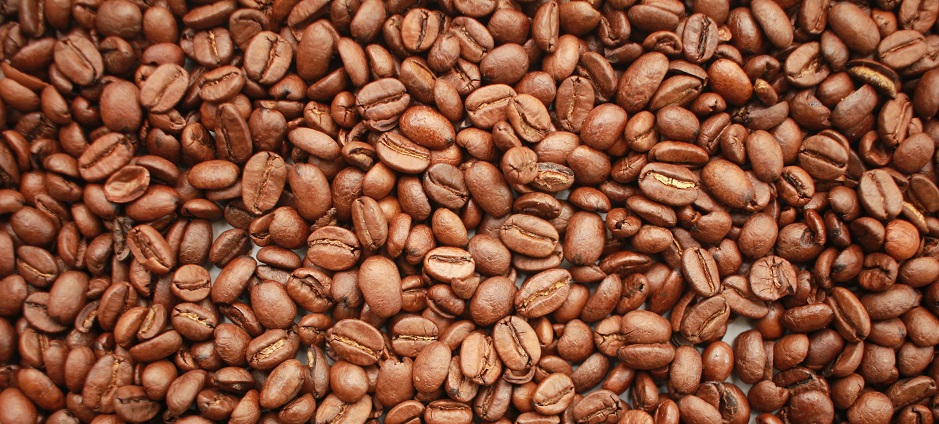Coffee flavour is a delicate balance and can be influenced by a number of things: origin, ground consistency, blend, temperature and roast to name but a few.
In this blog, we’ll be taking a look at coffee roasts and their impact on flavour. We’ll also be covering some common misconceptions, such as which roast has higher caffeine content.
What do we mean by roast and what impacts it?
The easiest way to identify coffee roast levels is by looking at the colour of the roasted beans, ranging from light to dark. As coffee beans are heated up during the roasting process (hence the name), their colour becomes darker as they lose moisture and their oils are secreted to their surface. Along with roasting temperature, colour is the most convenient way to determine a bean roast.
In terms of taste, roast level preferences are subjective. Generally, Americans prefer a lighter roast to Europeans, except for the West Coast where darker roasts are traditionally more popular. Historically, Europeans have always preferred their roasts darker.
Light Roast
Light roasted coffees are light brown in colour, with a light bright body and no surface oil on the beans. Light roast coffees generally have a sharper acidity compared to their darker counterparts, however, retain fuller flavours of origin.
When we look at the roasting process, a bean will pop or crack as it expands - usually at around 205°C. This will take place a couple of times as internal temperatures increase. Light roasted beans generally reach an internal temperature of 180°C – 205°C and therefore do not normally reach their “first” crack. If they do, roasting is stopped immediately after.
Medium Roast
Medium roasted coffees are medium brown in colour with more body than light roasts. Similar to lighter roasts, they have a matte finish, as they're not roasted at a high enough level to produce oil.
Medium roasts are the perfect sweet spot between light and dark, allowing for a more balanced flavour and weakened acidity. With less pronounced acidity and lower levels of caffeine, medium roasts have become the staple of most households.
Medium roasts generally reach temperatures of between 210°C and 220°C and finish roasting between the end of the first crack and beginning of the second. Medium roasts are often referred to as “American” roasts.
Dark Roast
Dark roasted coffees are often dark brown in colour, the darkest of the roasts. Due to the secretion of oil in the roasting process, they are often shiny instead of matte. Unlike light roast coffee which preserves the flavours of origin, a dark roast’s origin flavours tend to be overpowered by the flavours present during the roasting process. The coffee will generally have a bitter, smoky or even burnt taste and the level of caffeine is substantially decreased.
As you may have guessed, dark roasts reach the highest temperature. Dark roasts often reach an internal temperature of 240°C, at which point they crack for the second time.
Dark roasts include French Roast, Italian Roast, Espresso Roast and Spanish Roast. Due to their deep flavour and strength, dark roasts are often used in Espresso coffee.
Which Roast Has More Caffeine?
Does Dark or Light Roast have the most caffeine? Getting to this point, after reading what we have said, you would confidently say a Light Roast. And you would be correct, party.
Whilst for the most part Light Coffee Roasts will have greater levels of caffeine, it’s not always that simple. For instance, if the beans were to be weighed accurately before brewing, the dark-roast coffee would contain more caffeine. This is because dark roast beans are less dense, meaning they’re lighter. For the same weight, a greater number of dark roast beans would be required than that of light roast beans, hence a greater amount of caffeine in the coffee.
For the most part, all coffee roasts will have a similar level of caffeine in them and the variance would only be minimal anyway. Instead of dwelling over caffeine, keep it simple and pick the roast that you prefer the taste of best!
Low Down on Coffee Roast
There you have it, the low down on the differences between light, medium and dark roast coffees.
We’re fans of the traditional dark roast, but we’ve seen light roasts gaining popularity in recent years. We suggest trying each type of roast and deciding which roast is your favourite.
Don’t worry about ever getting bored though! The beauty of coffee is that roasts will ultimately vary on the origin. You can have a medium roast from Brazil and a medium roast from Vietnam and they’ll portray different flavours.
Let us know your favourite roast on social media!






